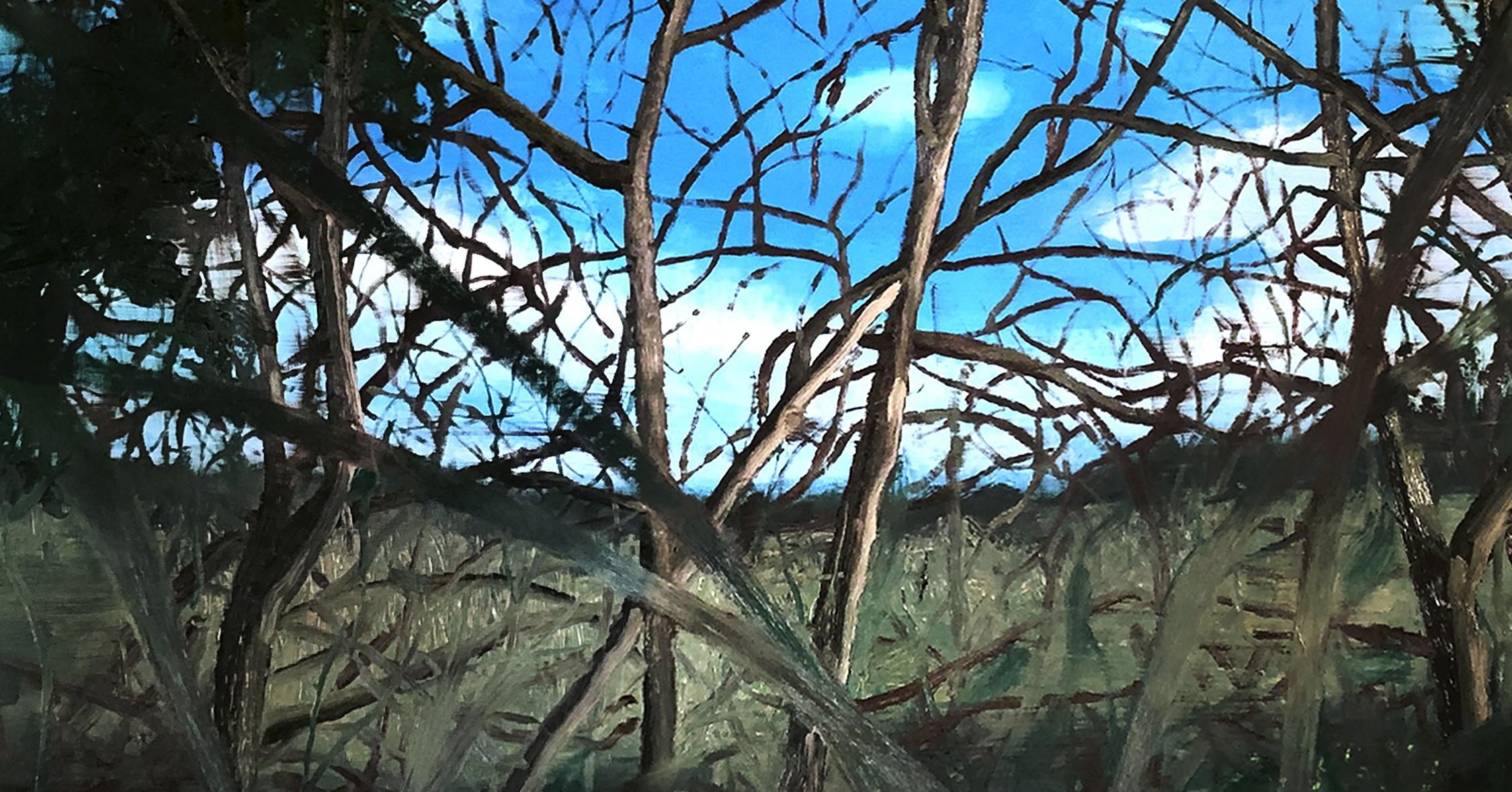
Andrew Birk
Para Mi Hija
Exhibition
-> Feb 4 2020 – May 8 2020
For his second individual exhibition in the gallery, Andrew Birk (Corvallis, Oregon, EE.UU, 1985) presents a new body of large-format paintings, building blocks that combine to form a contemporary fable about innocence and becoming. Para Mi Hija immerses us in the adventures of a little girl, paralleled by the visions of her father, who offers her a key to the discovery of the world from his own experiences. The artist creates a dream universe populated by lush nature, animals and strange characters. They become narrators of parodies about our society, as well as metaphors of growth. Beyond the autobiographical scope, this exhibition is a reflection on time and memory - remembering that children's stories are not naive, that they talk about the fears and hopes of the human condition.
As a child, I remember seeing sundials in family homes or public squares of villages in France. I was fascinated by these instruments ornamented with celestial symbols, and by the silhouettes they cast on the facades. I was told that time could be measured using the sun, but in those days I did not understand very well. The reality is that now I remain confused – this notion of time persists as complete abstraction. When I visited Andrew and his family in Catalonia, upon arriving to his studio and future home, I noticed a broken sundial, of which only the gnomon remained - the rod that indicates the hours - creating a drawing that cannot tell time, instead existing as an abstract dance of shadows. In the series of paintings found in this exhibition, we also find a ballet with time through the reinterpretation of the famous Holbein anamorphosis (The Ambassadors, 1533). Depending on one’s vantage, the distorted representation - a dual image, blurred or clear - creates a tone unsure of particular timeline or intention of order. What role does uncertainty play as a mode of pictorial construction?
In this corpus, thanks to tricks of scale and perspective, Andrew Birk creates an almost psychedelic sensation, with surfaces that feel palpable, as if endowed with movement. Thus availing itself the possibility of thinking about a dynamic of the layers of paint. A frog wants to jump off the canvas and away from the mundane, as a social commentary on the relationships between classes, a nod to the history of art. The amphibean shows us its torso, the hiddenness of its body, an unusual vision that reminds us of the interstitium between it and us. In a perhaps more subtle alusion to strata, a snake between molts waits patiently for its skin to be reborn. Are these bodies coming out of the canvas? Or should we break through the surface, glimpsing through a turbid spiral, an access portal to the ultimate surface, the emotional layer.
With his series of unconnected situations and uncomfortable characters, the paintings refer us to folk tales, accompanied by the malice that characterizes them. In these works, the shadows are perceived as a habitat, where all the objects and actors are watching us, evoking the ambiguity of the everyday and how truly strange it is. Other presences, such as textual spectors in imperceptible movement, age with the skin they tattooed, dilute with water, or gradually disintegrate with the stone that supports them.
A steel-eyed strawberry crossed between cute and devious, a man who seems lost in his own clumsiness, glamorous women, and other identity-less figures. Sometimes messengers, sometimes incarnations within his works, we can feel Andrew’s versatile presence, accompanying his daughter in these adjacent worlds that he is opening. They are not sweet, instead they challenge: be it with a magically highlighted atmosphere where a giant creature hides, or through an overgrown landscape that promises, perhaps, peace in the horizon. Inside these verdant passages, the subjects could be giants or ants, and simultaneously invite and expel the viewer. Amongst the shifting perspective and time, scale and role, viewer and subject, the question arises: is the father guiding his daughter or the other way around?
–– Aurélie Vandewynckele
Virtual finissage from 4 to 8th, 2020